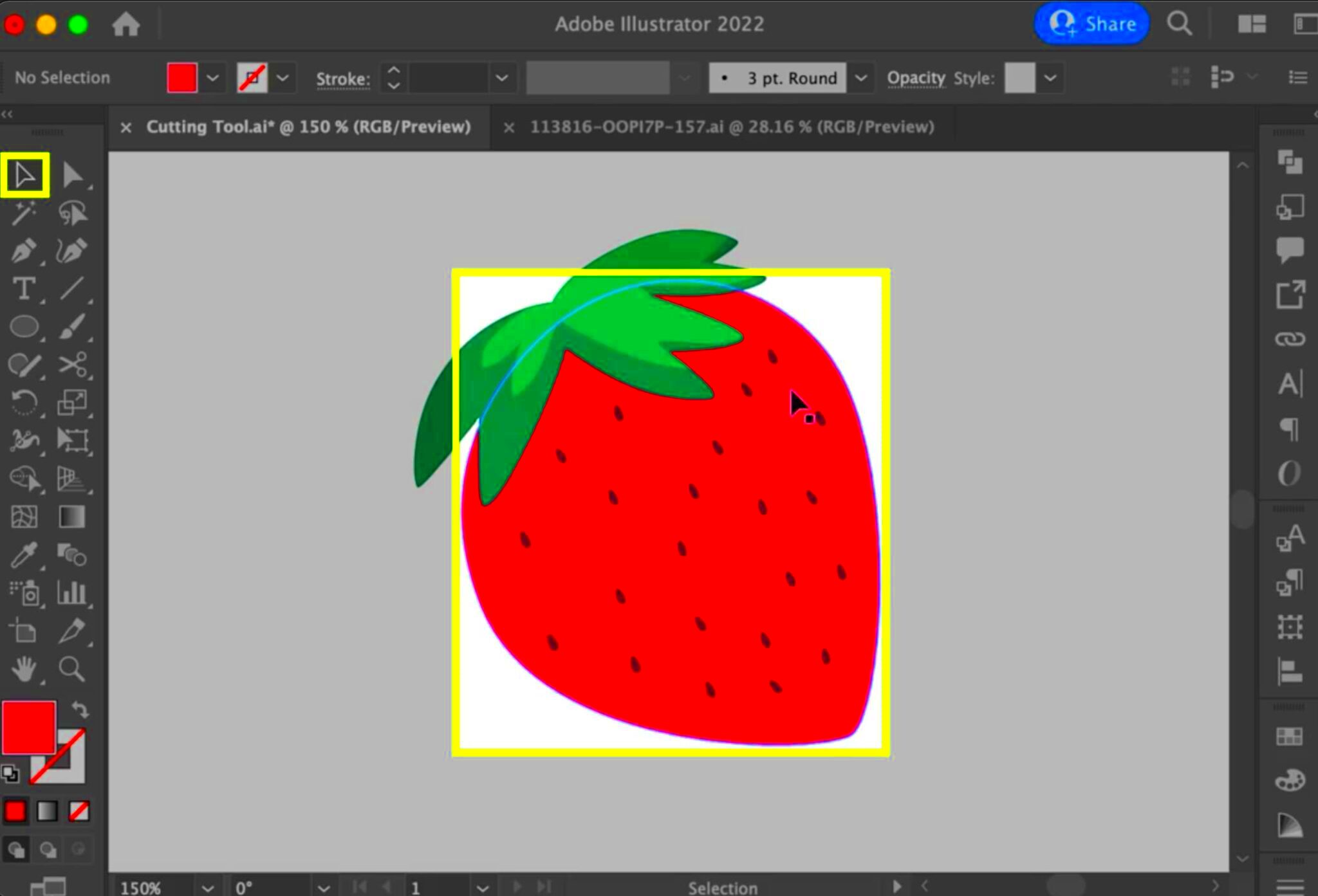Image cutting in Adobe Illustrator refers to the process of isolating a specific part of an image or design by trimming away unwanted areas. This technique is commonly used in graphic design to create precise, clean visuals that blend seamlessly into projects like logos, posters, and digital illustrations.
Unlike cropping, which removes parts of an image uniformly, cutting allows you to focus on intricate shapes or objects within an image. This flexibility is what makes Illustrator a popular choice for designers looking to achieve professional results. Whether you’re working on product mockups or crafting social media visuals, mastering this skill is essential for clean and engaging designs.
Why Precise Edits are Important
Precise edits play a critical role in maintaining the professionalism and visual appeal of any design. Here are a few reasons why accuracy matters:
- Consistency: Clean cuts ensure that your design elements align perfectly, creating a polished look.
- Improved Focus: Isolating specific parts of an image helps draw attention to the most important elements of your design.
- Flexibility: Precise cuts make it easier to reuse and adapt design elements across multiple projects without distortion.
- Client Expectations: Professional designs with clean edits reflect positively on your skills and meet client expectations effectively.
Small inaccuracies can lead to jagged edges or misaligned components, which can ruin an otherwise great design. That’s why taking time to perfect your cuts is well worth the effort.
Also Read This: how much is each picture to license on adobe stock
Tools You Can Use for Cutting Images in Illustrator
Adobe Illustrator offers several tools to help you cut images with precision. Each tool has unique advantages depending on your project:
| Tool | Purpose | Best Use Case |
|---|---|---|
| Pen Tool | Allows you to draw custom paths for precise cuts. | Best for intricate shapes and detailed designs. |
| Clipping Mask | Masks unwanted parts of an image using a shape. | Ideal for non-destructive edits and previews. |
| Shape Builder Tool | Merges and subtracts shapes to create custom cuts. | Great for simple, geometric designs. |
Each tool can be used individually or combined for more complex designs. By learning how and when to use these tools, you’ll unlock new creative possibilities for your projects.
Also Read This: Simplifying Image Downloading with the Best 123RF Images Downloader
Step-by-Step Guide to Cut Around an Image
Cutting around an image in Illustrator can seem intimidating at first, but with the right tools and approach, it’s a manageable process. Whether you’re isolating an object or creating a custom shape, following a step-by-step guide can help you achieve a clean, precise cut. Here’s a simple method to get you started:
- Step 1: Import the Image
Start by importing the image you want to cut. Go to File > Place and choose your image. Once placed, lock the image layer to prevent accidental movement. - Step 2: Select the Pen Tool
Select the Pen Tool (P) from the tool panel. This tool lets you trace the edges of your image with accuracy. - Step 3: Create a Path Around the Image
Click to place anchor points along the edges of the object you want to isolate. Use the handles to adjust curves as needed. Try to keep your path as close to the edges of the image as possible. - Step 4: Close the Path
Once you’ve traced the entire object, connect the final point to the starting point to close the path. - Step 5: Make the Cut
With the path selected, use Object > Clipping Mask > Make to cut around the image. This will hide the parts outside the path, leaving only the selected object visible.
With practice, you’ll get faster and more accurate at using the Pen Tool. It’s the best way to achieve precision when cutting around an image in Illustrator.
Also Read This: how much is an adobe stock subscription
Tips for Working with Complex Shapes
When working with complex shapes, precision becomes even more important. The more intricate the image, the harder it is to get smooth edges and clean cuts. Here are some tips to make the process easier:
- Use the Direct Selection Tool: The Direct Selection Tool (A) allows you to select and manipulate individual anchor points and path segments. This is especially useful for adjusting curves and fine-tuning complex shapes.
- Zoom In: Don’t hesitate to zoom in on your image to get a closer view. This helps ensure you’re tracing the path as accurately as possible.
- Work with Layers: Organize your work by placing each part of the image on a separate layer. This will help you focus on one section at a time and prevent accidental edits to other parts of the image.
- Use the Smooth Tool: Illustrator’s Smooth Tool can help smooth out jagged edges. Simply select the path and drag the Smooth Tool over any rough areas.
- Practice Precision: For complex shapes, take your time and focus on accuracy. Small mistakes can be harder to fix in intricate designs, so working slowly and carefully will pay off in the end.
By following these tips, you’ll be able to handle even the most complex shapes with ease, ensuring smooth, professional cuts every time.
Also Read This: How to Insert an Image into an EPUB File for Customized E-books
Common Mistakes to Avoid
While cutting around images in Illustrator, it’s easy to make mistakes—especially when you’re new to the software. However, being aware of common pitfalls can help you avoid frustration and improve your workflow. Here are some mistakes to watch out for:
- Not Using Layers: Failing to organize your image and paths into separate layers can lead to confusion and mistakes. Layers help you manage different elements of your design, making it easier to adjust parts of your image without affecting others.
- Leaving Gaps in the Path: One of the most common errors is leaving gaps between anchor points when using the Pen Tool. This results in incomplete cuts or rough edges. Always make sure the path is closed before finalizing your design.
- Overusing Anchor Points: Adding too many anchor points can complicate the path and make editing more difficult. Use as few anchor points as possible while still maintaining precision in the shape.
- Not Refining the Path: Sometimes, your initial path will be jagged or imprecise. Make sure to go back and refine the path using the Direct Selection Tool or Smooth Tool to ensure the edges are clean and even.
- Rushing the Process: It’s tempting to speed through the cutting process, but rushing often leads to sloppy work. Take your time to get the path right, and don’t be afraid to go back and make adjustments if something looks off.
By avoiding these common mistakes, you can ensure your cuts are clean, accurate, and professional-looking every time. The more you practice, the fewer mistakes you’ll make, and the easier the process will become.
Also Read This: How to Rotate an Image in Lightroom
How to Save and Export Your Edited Image
Once you’ve completed the cutting process in Illustrator, the next crucial step is saving and exporting your image. Whether you're preparing your design for printing, sharing online, or incorporating it into another project, exporting correctly ensures that your hard work retains its quality and can be used across different platforms. Here’s how to save and export your image in a few simple steps:
- Step 1: Save Your Work
First, save your project in Illustrator’s native file format (.AI). This allows you to make future edits without losing any data. Go to File > Save As and select the destination folder. - Step 2: Export for Different Uses
After saving your .AI file, it’s time to export your image. Depending on your needs, you may want to export in different formats:- For Web: Use File > Export > Export As and select JPEG or PNG for web use. JPEG is great for photographs, while PNG is ideal for images with transparent backgrounds.
- For Print: Use PDF or TIFF for high-quality prints.
- For Vector Projects: Export as SVG or EPS to preserve the scalability of your vector graphics.
- Step 3: Adjust Export Settings
Before exporting, you can adjust the resolution, color mode, and other settings depending on the file format. If you’re working for print, ensure the resolution is set to 300 ppi. For web use, 72 ppi is typically sufficient. - Step 4: Export the File
Once you’ve selected the format and adjusted settings, click Export to save your file in the desired location. Now your image is ready for use!
By following these steps, you'll ensure that your image is saved and exported in the best possible format, ready for any use—whether digital or print.
Also Read This: how to mirror an image in preview
FAQs
Here are some common questions about cutting images in Illustrator, along with their answers:
- What if my cut is jagged or uneven?
If your cut edges are not smooth, try using the Smooth Tool or adjust the anchor points with the Direct Selection Tool. Zoom in for a more precise edit. - Can I cut around an image without destroying the original?
Yes! Use Clipping Masks to mask areas without permanently altering the original image. This allows for non-destructive edits. - How can I cut out a background from an image?
To cut out the background, trace around the object with the Pen Tool, and then apply a clipping mask or delete the background layer. - Is there an easier way to cut out complex shapes?
If the shape is complex, consider using the Pathfinder Tool to merge or subtract shapes, simplifying the process. - Can I cut out an image if it’s in a raster format?
Yes, but raster images may require more manual work to get precise cuts. You can trace them using the Pen Tool or convert them to vector shapes first using the Image Trace feature.
By understanding the answers to these common questions, you'll have the tools and knowledge to confidently cut images in Illustrator.
Conclusion
Cutting around images in Adobe Illustrator may seem complex at first, but with the right approach, tools, and techniques, it becomes an essential skill for achieving high-quality, professional designs. From mastering the Pen Tool to ensuring precise exports, every step plays a role in achieving a clean and polished result.
By following the detailed steps outlined above, you’ll be able to confidently cut images, refine complex shapes, and avoid common mistakes. Remember, the key is practice—every time you cut around an image, your skills will improve.
Now, whether you're creating logos, illustrations, or digital graphics, you have the tools and knowledge to make precise edits in Illustrator with ease. Happy designing!











